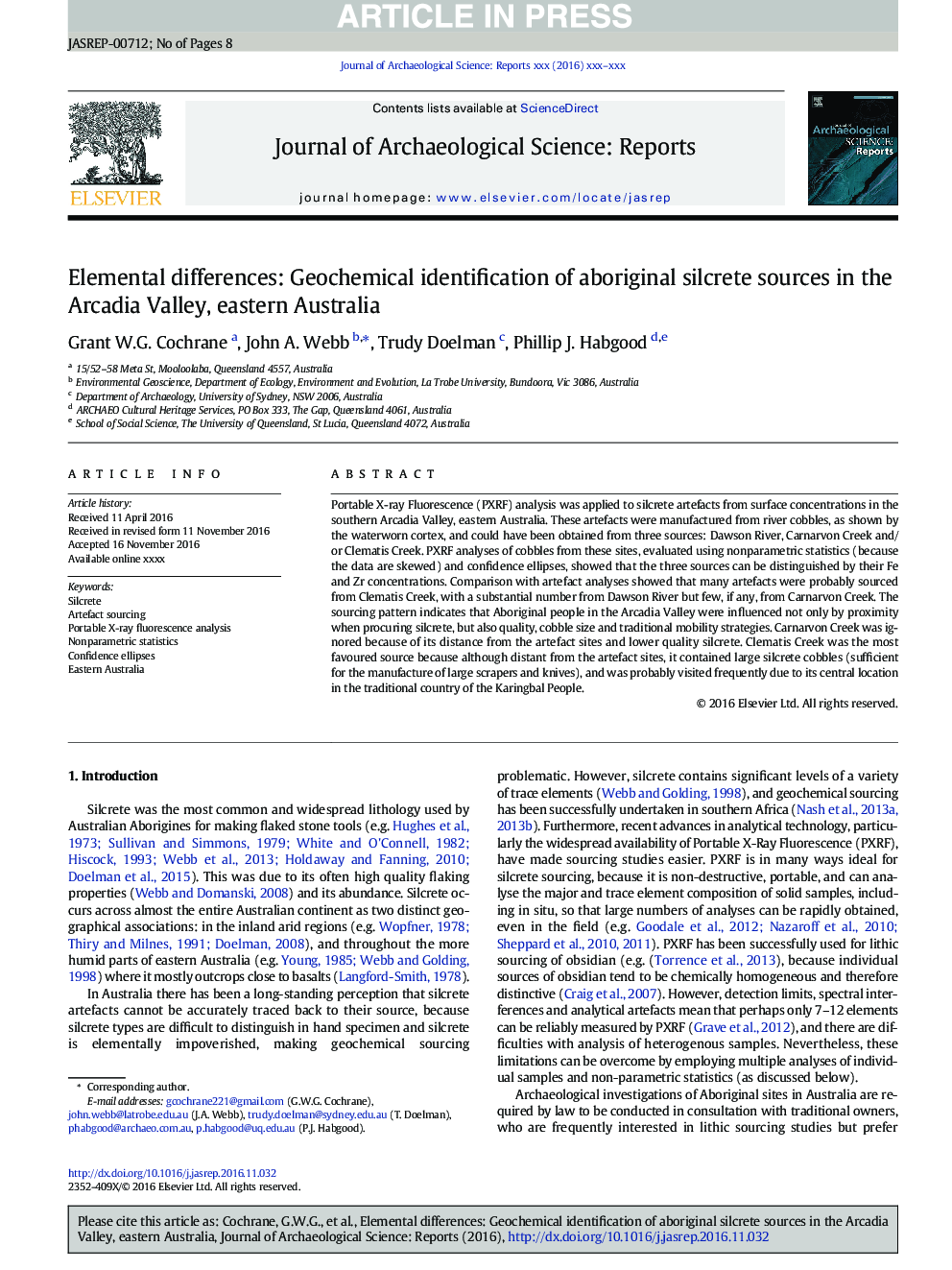| Article ID | Journal | Published Year | Pages | File Type |
|---|---|---|---|---|
| 7445156 | Journal of Archaeological Science: Reports | 2017 | 8 Pages |
Abstract
Portable X-ray Fluorescence (PXRF) analysis was applied to silcrete artefacts from surface concentrations in the southern Arcadia Valley, eastern Australia. These artefacts were manufactured from river cobbles, as shown by the waterworn cortex, and could have been obtained from three sources: Dawson River, Carnarvon Creek and/or Clematis Creek. PXRF analyses of cobbles from these sites, evaluated using nonparametric statistics (because the data are skewed) and confidence ellipses, showed that the three sources can be distinguished by their Fe and Zr concentrations. Comparison with artefact analyses showed that many artefacts were probably sourced from Clematis Creek, with a substantial number from Dawson River but few, if any, from Carnarvon Creek. The sourcing pattern indicates that Aboriginal people in the Arcadia Valley were influenced not only by proximity when procuring silcrete, but also quality, cobble size and traditional mobility strategies. Carnarvon Creek was ignored because of its distance from the artefact sites and lower quality silcrete. Clematis Creek was the most favoured source because although distant from the artefact sites, it contained large silcrete cobbles (sufficient for the manufacture of large scrapers and knives), and was probably visited frequently due to its central location in the traditional country of the Karingbal People.
Related Topics
Social Sciences and Humanities
Arts and Humanities
History
Authors
Grant W.G. Cochrane, John A. Webb, Trudy Doelman, Phillip J. Habgood,
